Abstract
The effect of metoclopramide (20 mg p.o) on the times taken for a radiolabelled liquid starch meal to empty from the stomach and to reach the ileum (230 cm from the mouth), the ileal flow rates and the degree of carbohydrate absorption were studied in five normal male volunteers, intubated with a four lumen intestinal tube. Administration of metoclopramide significantly reduced the time taken for delivery of 50% and 80% of the meal to the ileal aspiration site, but had no significant effect on the half time for gastric emptying. Administration of metoclopramide did not affect the average flow rate or the total postprandial volume, which passed the ileal aspiration site. Administration of metoclopramide reduced carbohydrate absorption in every subject by between 8 and 30%. This study is consistent with the hypothesis that metoclopramide may reduce the degree of absorption in the human small intestine by decreasing the contact time between food and small intestinal epithelium, though it could also act by reducing the area of mucosa in contact with nutrients.
Full text
PDF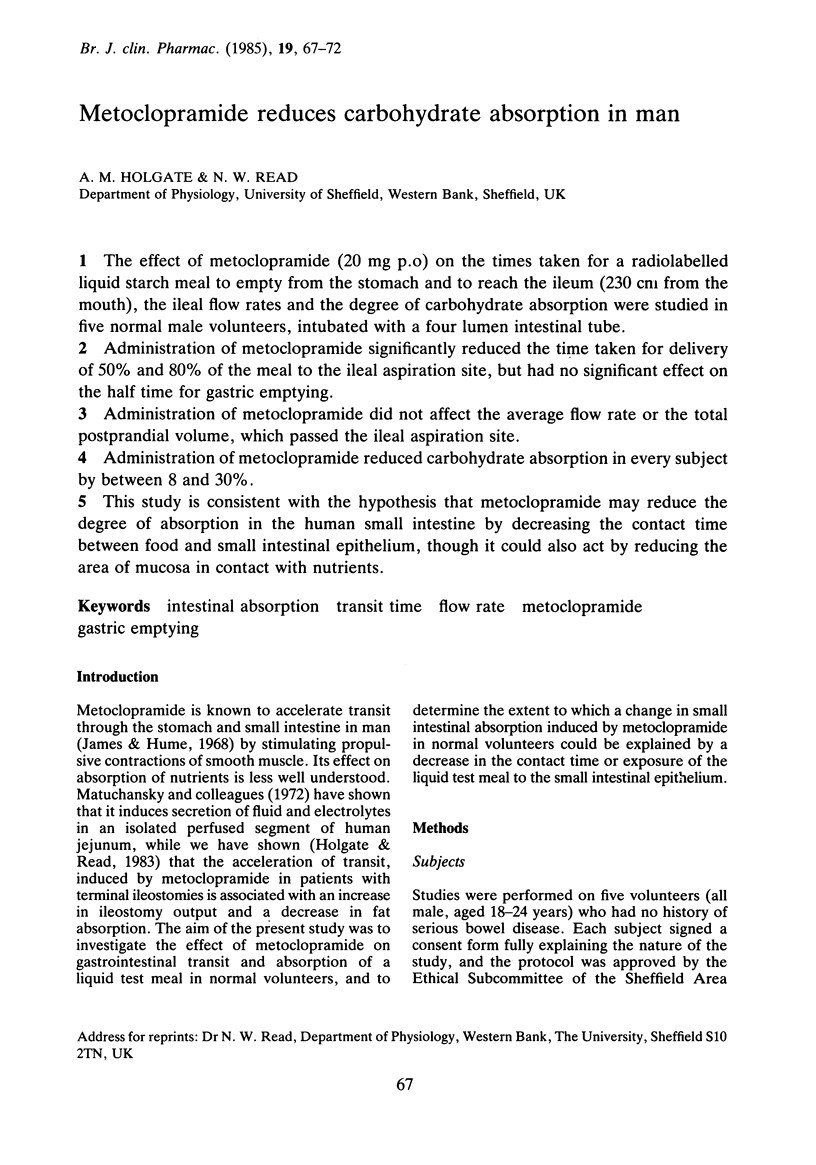
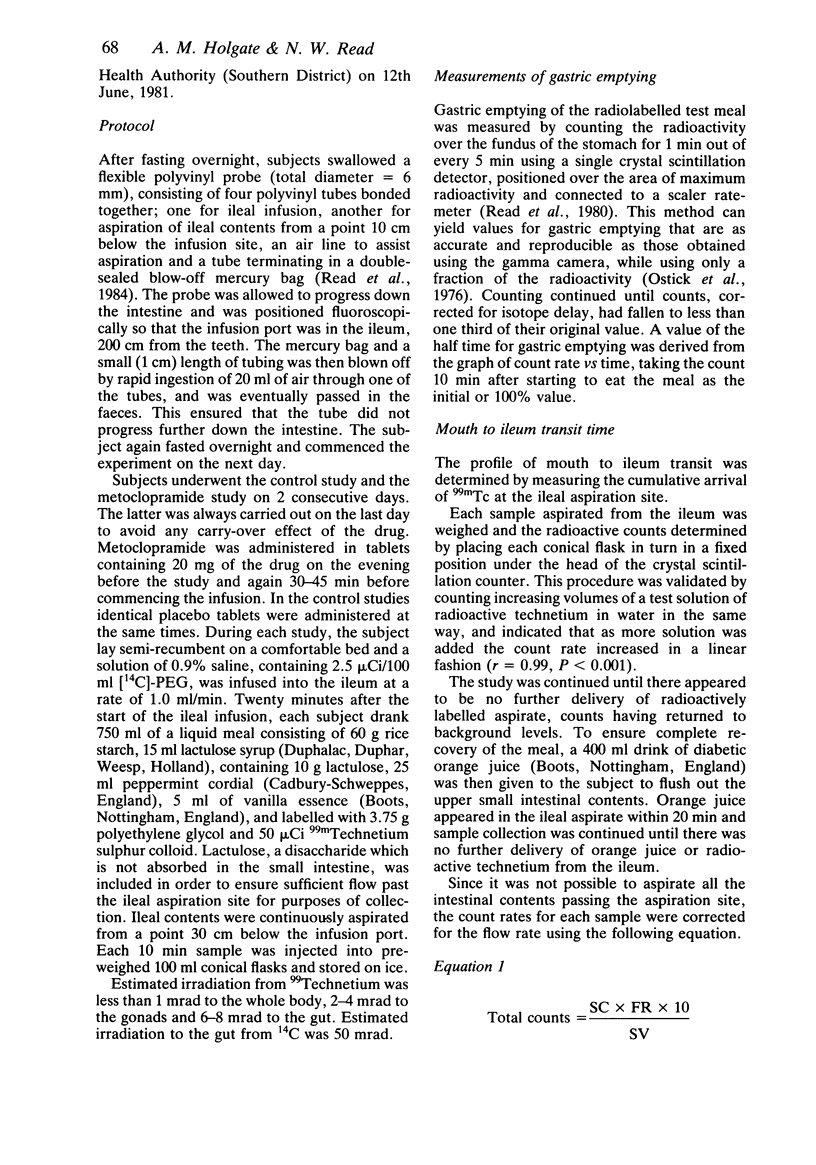
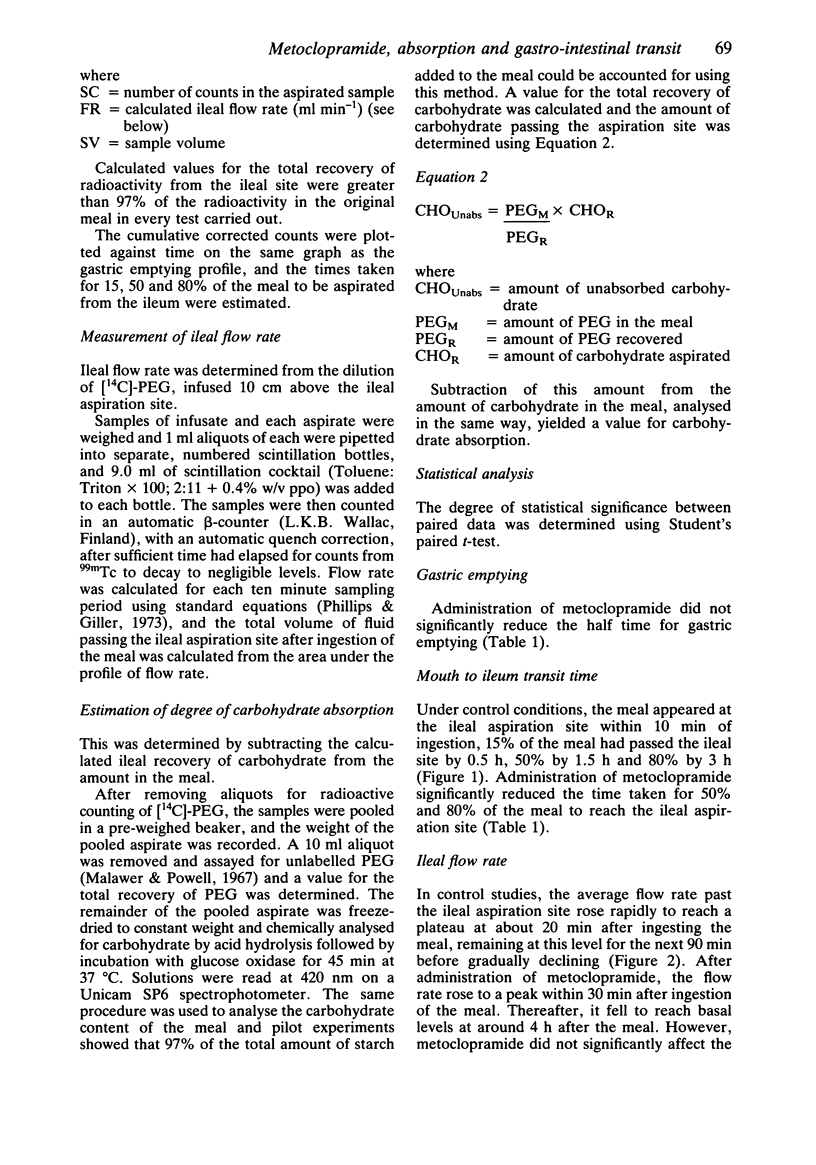
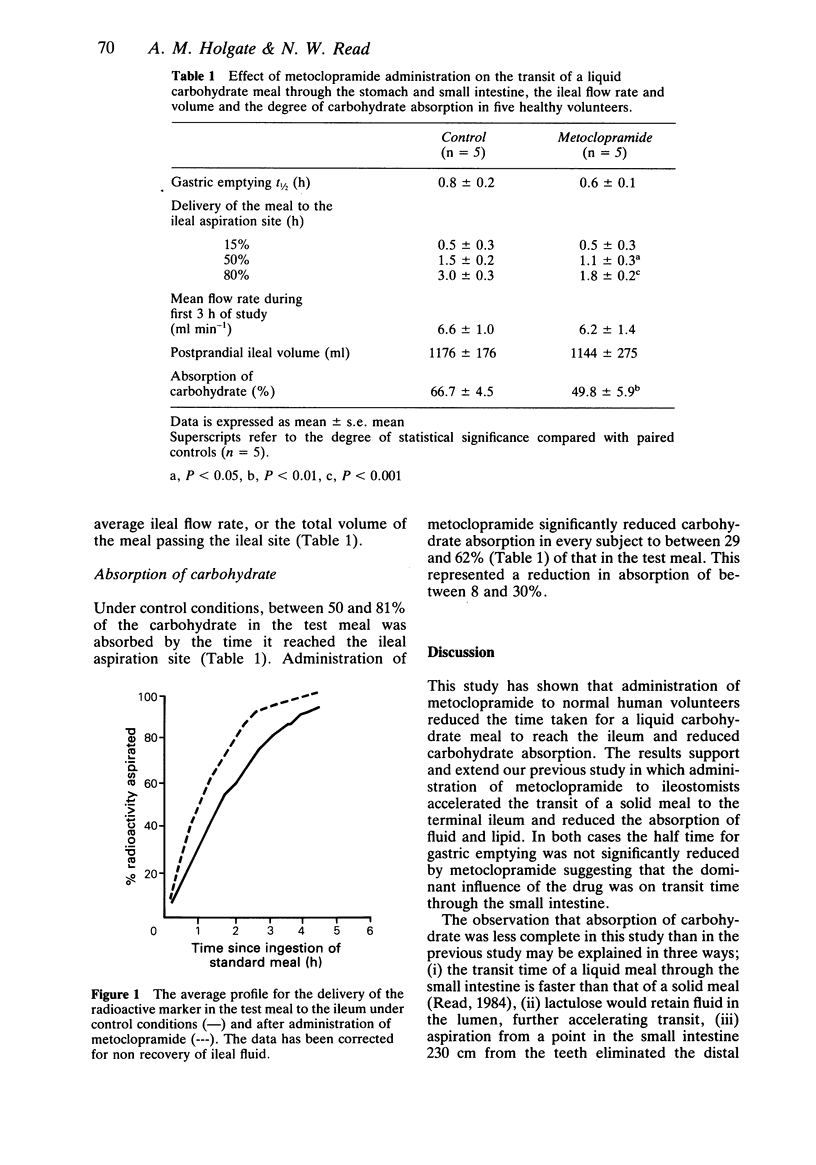

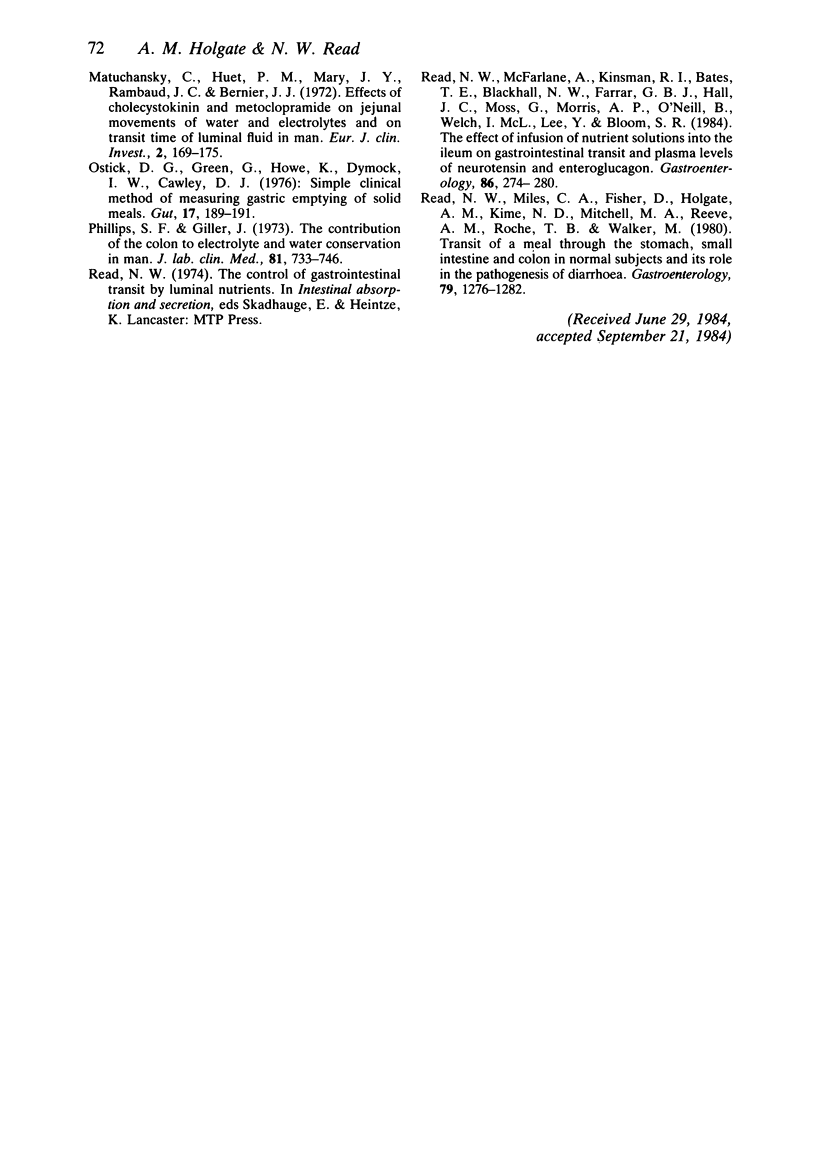
Selected References
These references are in PubMed. This may not be the complete list of references from this article.
- Hertz A. F. The ileo-caecal sphincter. J Physiol. 1913 Oct 17;47(1-2):54–56. doi: 10.1113/jphysiol.1913.sp001612. [DOI] [PMC free article] [PubMed] [Google Scholar]
- Hill G. L., Mair W. S., Goligher J. C. Impairment of 'ileostomy adaptation' in patients after ileal resection. Gut. 1974 Dec;15(12):982–987. doi: 10.1136/gut.15.12.982. [DOI] [PMC free article] [PubMed] [Google Scholar]
- Holgate A. M., Read N. W. Relationship between small bowel transit time and absorption of a solid meal. Influence of metoclopramide, magnesium sulfate, and lactulose. Dig Dis Sci. 1983 Sep;28(9):812–819. doi: 10.1007/BF01296904. [DOI] [PubMed] [Google Scholar]
- James W. B., Hume R. Action of metoclopramide on gastric emptying and small bowel transit time. Gut. 1968 Apr;9(2):203–205. doi: 10.1136/gut.9.2.203. [DOI] [PMC free article] [PubMed] [Google Scholar]
- Johansson C. Studies of gastrointestinal interactions. VII. Characteristics of the absorption pattern of sugar, fat and protein from composite meals in man. A quantitative study. Scand J Gastroenterol. 1975;10(1):33–42. [PubMed] [Google Scholar]
- Matuchansky C., Huet P. M., Mary J. Y., Rambaud J. C., Bernier J. J. Effects of cholecystokinin and metoclopramide on jejunal movements of water and electrolytes and on transit time of luminal fluid in man. Eur J Clin Invest. 1972 Mar;2(3):160–175. doi: 10.1111/j.1365-2362.1972.tb00586.x. [DOI] [PubMed] [Google Scholar]
- Ostick D. G., Howe K., Green G., Dymock I. W., Cowley D. J. Simple clinical method of measuring gastric emptying of solid meals. Gut. 1976 Mar;17(3):189–191. doi: 10.1136/gut.17.3.189. [DOI] [PMC free article] [PubMed] [Google Scholar]
- Phillips S. F., Giller J. The contribution of the colon to electrolyte and water conservation in man. J Lab Clin Med. 1973 May;81(5):733–746. [PubMed] [Google Scholar]
- Read N. W., McFarlane A., Kinsman R. I., Bates T. E., Blackhall N. W., Farrar G. B., Hall J. C., Moss G., Morris A. P., O'Neill B. Effect of infusion of nutrient solutions into the ileum on gastrointestinal transit and plasma levels of neurotensin and enteroglucagon. Gastroenterology. 1984 Feb;86(2):274–280. [PubMed] [Google Scholar]
- Read N. W., Miles C. A., Fisher D., Holgate A. M., Kime N. D., Mitchell M. A., Reeve A. M., Roche T. B., Walker M. Transit of a meal through the stomach, small intestine, and colon in normal subjects and its role in the pathogenesis of diarrhea. Gastroenterology. 1980 Dec;79(6):1276–1282. [PubMed] [Google Scholar]


